Keratinocyte-specific ablation of Mcpip1 impairs skin integrity and promotes local and systemic inflammation
- PMID: 31786670
- PMCID: PMC8962524
- DOI: 10.1007/s00109-019-01853-2
Keratinocyte-specific ablation of Mcpip1 impairs skin integrity and promotes local and systemic inflammation
Abstract
MCPIP1 (Regnase-1, encoded by the ZC3H12A gene) regulates the mRNA stability of several inflammatory cytokines. Due to the critical role of this RNA endonuclease in the suppression of inflammation, Mcpip1 deficiency in mice leads to the development of postnatal multiorgan inflammation and premature death. Here, we generated mice with conditional deletion of Mcpip1 in the epidermis (Mcpip1EKO). Mcpip1 loss in keratinocytes resulted in the upregulated expression of transcripts encoding factors related to inflammation and keratinocyte differentiation, such as IL-36α/γ cytokines, S100a8/a9 antibacterial peptides, and Sprr2d/2h proteins. Upon aging, the Mcpip1EKO mice showed impaired skin integrity that led to the progressive development of spontaneous skin pathology and systemic inflammation. Furthermore, we found that the lack of epidermal Mcpip1 expression impaired the balance of keratinocyte proliferation and differentiation. Overall, we provide evidence that keratinocyte-specific Mcpip1 activity is crucial for the maintenance of skin integrity as well as for the prevention of excessive local and systemic inflammation. KEY MESSAGES: Loss of murine epidermal Mcpip1 upregulates transcripts related to inflammation and keratinocyte differentiation. Keratinocyte Mcpip1 function is essential to maintain the integrity of skin in adult mice. Ablation of Mcpip1 in mouse epidermis leads to the development of local and systemic inflammation.
Keywords: MCPIP1; Regnase-1; Skin inflammation; ZC3H12A.
Conflict of interest statement
Figures

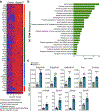
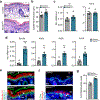
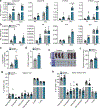
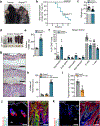
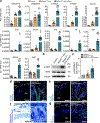
References
-
- Guttman-Yassky E, Nograles KE, Krueger JG (2011) Contrasting pathogenesis of atopic dermatitis and psoriasis—part I: clinical and pathologic concepts. J Allergy Clin Immunol 127:1110–1118 - PubMed
-
- van Smeden J, Bouwstra JA (2016) Stratum corneum lipids: their role for the skin barrier function in healthy subjects and atopic dermatitis patients. Curr Probl Dermatol 49:8–26 - PubMed
Publication types
MeSH terms
Substances
Grants and funding
LinkOut - more resources
Full Text Sources
Molecular Biology Databases

